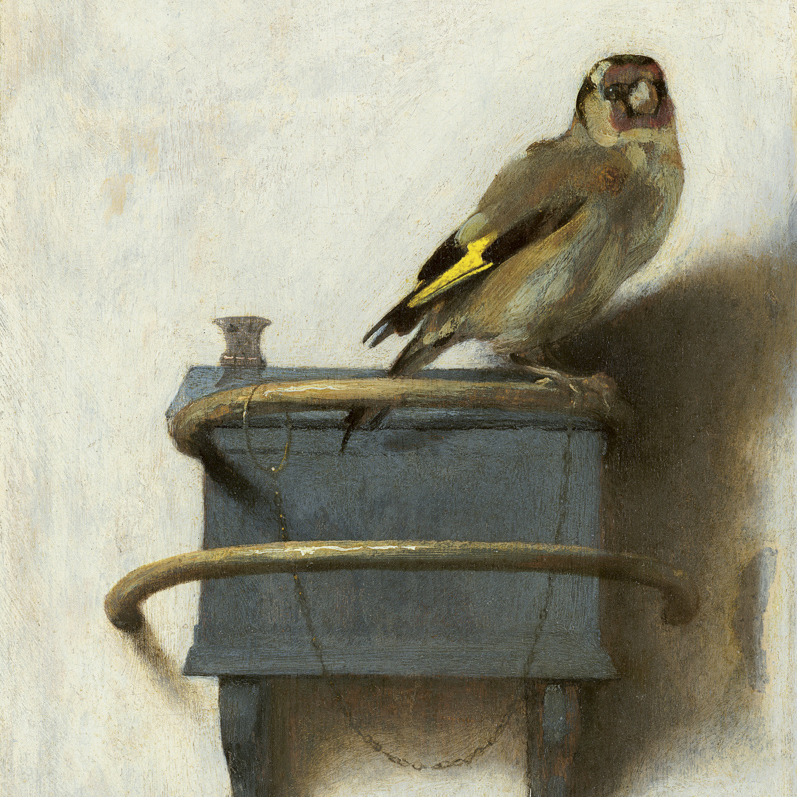On the morning of October 12, 1654, 90,000 pounds of gunpowder stored under the Dutch city of Delft exploded, hurling nearby trees and people into the air. Witnesses would have seen and felt the blast before they heard it: first a flash, then a deep rumble through the ground beneath them, and then a deafening series of bangs. Buildings in the vicinity collapsed immediately; fires spread.
It is not known exactly how many people were killed in the Delft Thunderclap, as it was soon called, but it is known that one of them was the painter Carel Fabritius.
Fabritius is probably best known for his extraordinary portrait of a goldfinch, now in the collection of the Mauritshuis, in The Hague, but in Thunderclap: A Memoir of Art and Life & Sudden Death, Laura Cumming introduces his work via a quirkier painting she loves, in the National Gallery in London: A View of Delft, with a Musical Instrument Seller’s Stall.

If the said seller is, to Cumming, “the timeless outsider,” that is also how she presents Fabritius himself. The enigmatic artist left only a tiny body of work, and his short life (he was 32 at the time of the Thunderclap) disappears into long periods of archival silence.
The documents that do survive offer glimpses of early promise and tragedy: a place at Rembrandt’s studio in Amsterdam, a young wife who died, the loss of the last of their surviving children just three months later, when Fabritius was still only 21. “I know that when you look at his first self-portrait, you are looking into the eyes of a man who has suffered all this,” Cumming writes, “who lives with the burden of such sorrow.”
Thunderclap is a book of yearning. Another presence is Cumming’s father, the artist James Cumming, who, like Fabritius (and, surely, all fortunate artists) died before his work was complete. The book accumulates into a group portrait of various artists and a convincing defense of 17-century Dutch art against the “old cliché about Dutch artists that all they ever do is replicate what is in front of their eyes.”
Cumming’s descriptions of what is in front of her eyes (or what she can conjure in her imagination, when conveying artists’ worlds) are often incandescently beautiful, and well informed. Defending Dutch still lifes, for instance, she does justice to their brilliance, drawing out the artists’ compositions and choices, offering suggestions for where—and how—we should look without diminishing the pictures’ mystery.

Fabritius’s world was a new Dutch Republic where “art proliferated … as nowhere else and as never before.” In tiny Delft, Cumming points out, “the sheer number of artists living all together there [was] so disproportionately high as to compare with the Impressionists in Montmartre, or the Abstract Expressionists in Greenwich Village.”
Her portrait includes Rembrandt and his wife, Saskia, in their “ruinously extravagant house”; Hendrick Avercamp and his scenes of freezing landscapes; Johannes Vermeer, often thought to have been a student of Fabritius’s (and who was his close neighbor in Delft at the time of the Thunderclap); the “marvelously zestful” art of Rachel Ruysch; her fellow flower painter, Maria van Oosterwijck; the Ter Borch family; and many others, including a deeply underwhelmed Joshua Reynolds on tour through Holland.
Thunderclap is, Cumming writes, a book “about what these painters made of the mysteries of life and art, how and what they taught me to see.” She is interested in how art consoles, transports, and eludes us, but particularly in how the best paintings appear to interact with us. Just as she celebrated Velázquez in 2016’s The Vanishing Velázquez for the impression his subjects give of sentience (“Look into [Las Meninas] and you are seen in return”), so the instrument seller in Fabritius’s painting seems, to Cumming, “peculiarly alive to the nearness of your presence.”
Cumming has a special ability to transport her readers, presenting historical facts and scientific developments as the marvels they are. Her curiosity is infectious—you don’t have to love Dutch art to love this book, though you may well come away with a renewed sense of its value.
Not all of her pronouncements about what art is and how we relate to it (“Paintings are reliable; they are not supposed to let us down,” etc.) feel equally profound, but we can still luxuriate in visiting the Dutch Golden Age with such a humane and knowledgeable guide.

Sarah Watling is a London-based writer and the author of Noble Savages: The Olivier Sisters and, most recently, Tomorrow Perhaps the Future: Writers, Outsiders, and the Spanish Civil War
